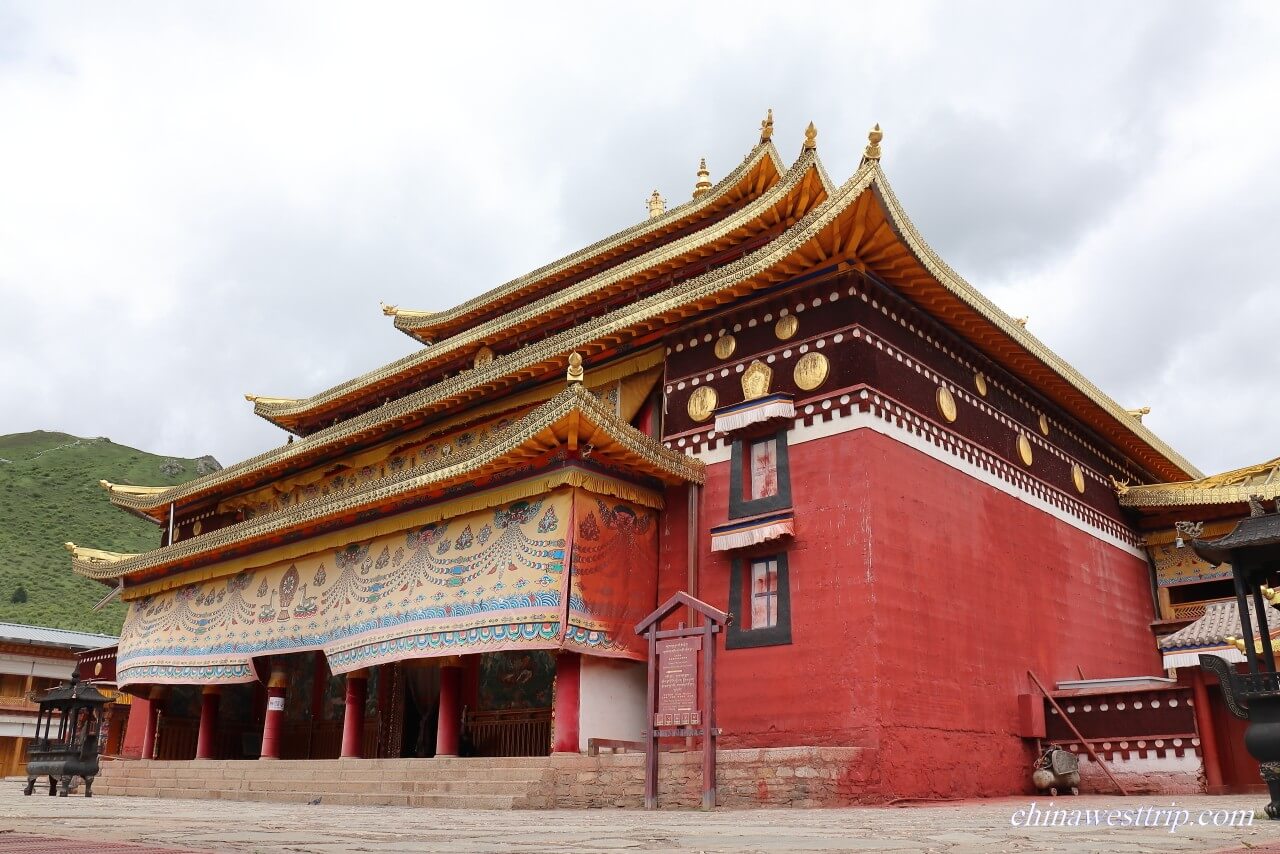
Taktsang Lhamo Kirti Gompa
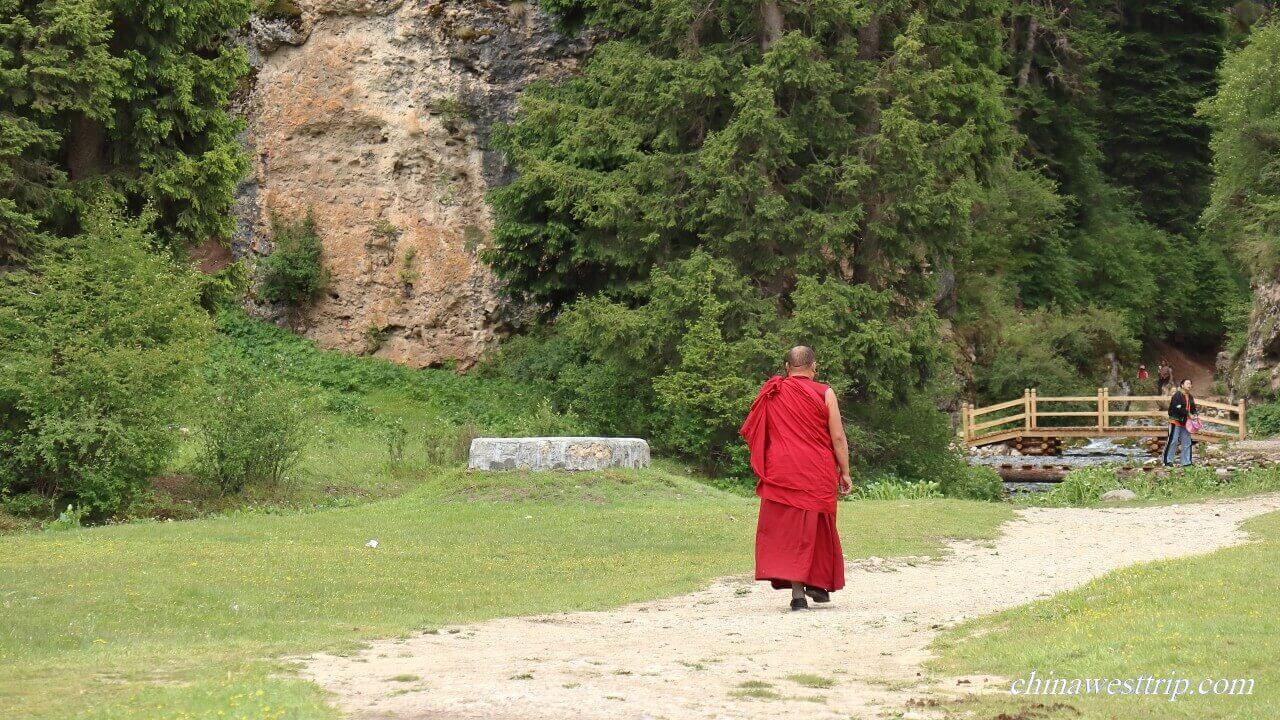
Name in Chinese: 四川朗木寺 Sì Chuān Lǎng Mù Sì [si: tsuæ læŋ mu: si:]
Duration: Two Hours
Location: Hongxing Township, Ruo’ergai County, Aba Prefecture, Sichuan Province
Highlights: Tibetan Folk Custom and Buddhist Culture
Taktsang Lhamo Kirti Gompa is a lamasery in Northern Sichuan Province. It is also called Sichuan Langmu Monastery by locals. The monastery was founded by the First Kirti Living Buddha in the year of 1413. The name of the First Kirti Living Buddha was Rongqin Gendun Jatsan. He was one of Master Tsongkhapa’s disciples. The monastery consists of a group of buildings, namely, Wensi Lecture Hall, the Thousand-Hand Avalokitesvara’s Hall, Tsongkhapa’s Hall and the Fifth Kirti Living Buddha’s Hall. The body of the Fifth Kirti Living Buddha is deposited in a pagoda of the monastery for over three hundred years without decomposition.
The monastery is close to Langmusi Town which is situated on the border between Gansu Province and Sichuan Province. The town is divided into two parts by the Bailongjiang River. The north of the town is under the jurisdiction of Gansu Province, while the south portion belongs to Sichuan Province. The full name of the town is Dacang Langmu. Both Dacang and Langmu are words of Tibetan language. The former means “tiger’s den” in English, and the latter can be translated into English as “celestial mother”. Legend has it that locals claimed visitations from the Celestial Mother in a tiger’s den. The Celestial Mother’s name is Laksmi, a goddess in Hinduism. She is regarded by Tibetan Buddhists as a guardian angel. The town is a place where people of different faiths harmoniously live together. There are two lamaseries and a mosque in the town, namely Sertri Monastery(or Gaden Sertri Gompa), Kirti Monastery(or Taktsang Lhamo Kirti Gompa) and Langmusi Mosque. Lamas in both Sertri Monastery and Kirti Monastery follow the tradition of Ge-lug-pa Lamaism.
Tourists can go hiking from Kirti Monastery to Namo gorge where the Bailongjiang River rises. The gorge is covered in lush green vegetation. The main sightseeing spots in the gorge include the Fairy-Maiden’s Cave, the Tiger’s Den and the Dragon’s Lair. The Dragon’s Lairs is the source of the Bailong River. The name of the river, Bailong means the white dragon in English. Some of the tourists often walk up to a mountaintop from the end of the gorge which provides a panoramic view of Langmusi Town.
Travel Tips:
How to Get to Langmusi Town
Langmusi Town is located 390 kilometers(242 miles) to the southwest of Lanzhou, 560 kilometers(348 miles) to the north of Chengdu. It is a popular destination for those tourists who travel overland from Sichuan to Gansu. Their tours often combine Northern Sichuan’s Attraction with Southern Gansu’s, such as, Jiuzhaigou Valley, Ruo’ergai Pasture, Gahai Lake and Labrang Monastery.
Weather
The temperature at Langmusi Town ranges from minus 12℃(10.4°F) to 4℃(39.2°F) in spring, 2℃(35.6°F) to 13℃(55.4°F) in summer, 6℃(42.8°F) to 18℃(64.4°F) in autumn and minus 8℃(17.6°F) to 6℃(42.8°F) in winter. The best time to visit Huahu Lake is between May and July.
Because the altitude is high, visitors should prepare warm coat and try to decrease the risk of catching a cold, even in the summer.
It is highly suggested to bring a sunscreen and a pair of sunglasses.
Recommended Tour:
Fifteen-day Sichuan Photography Tour
Related Articles:
The No.1 Bend of the Yellow River

Taktsang Lhamo Kirti Gompa
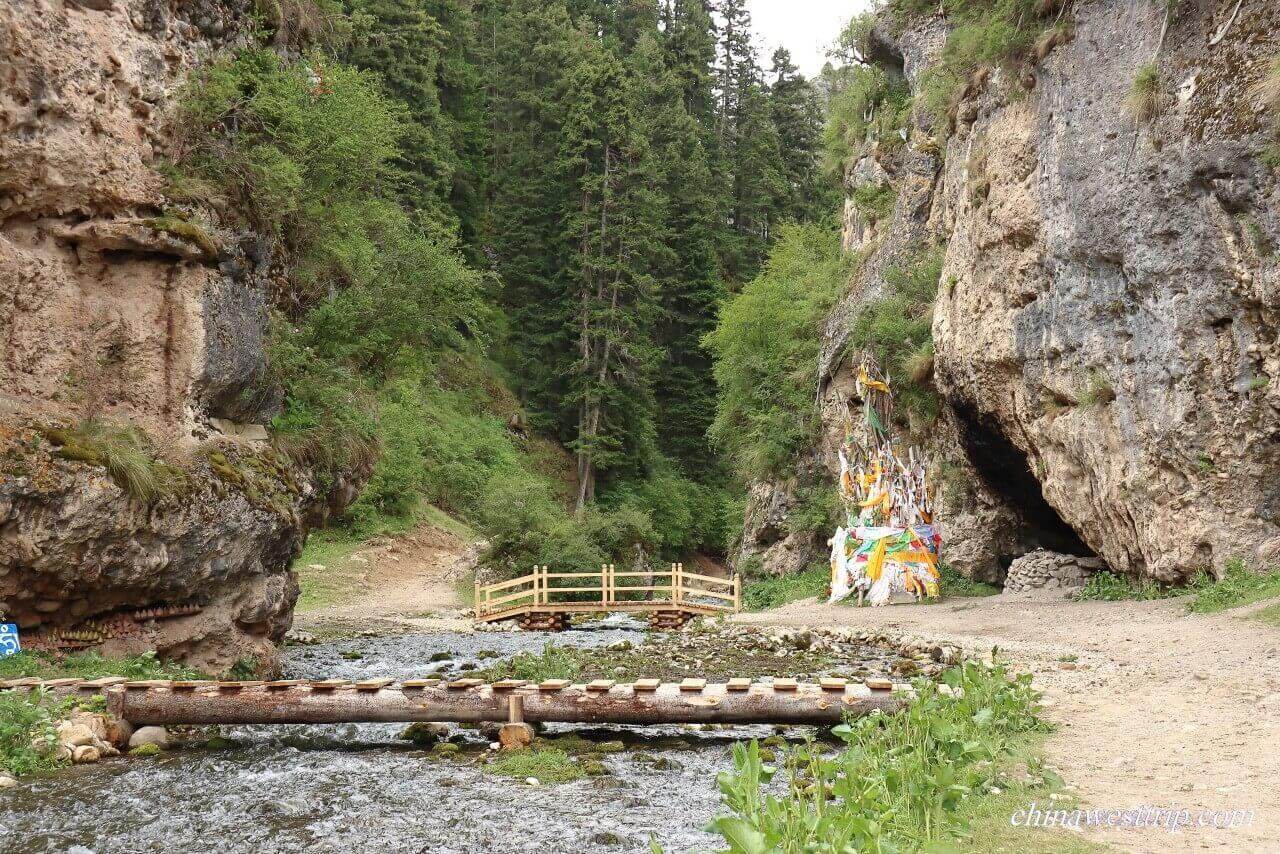
Langmu Temple Sichuan
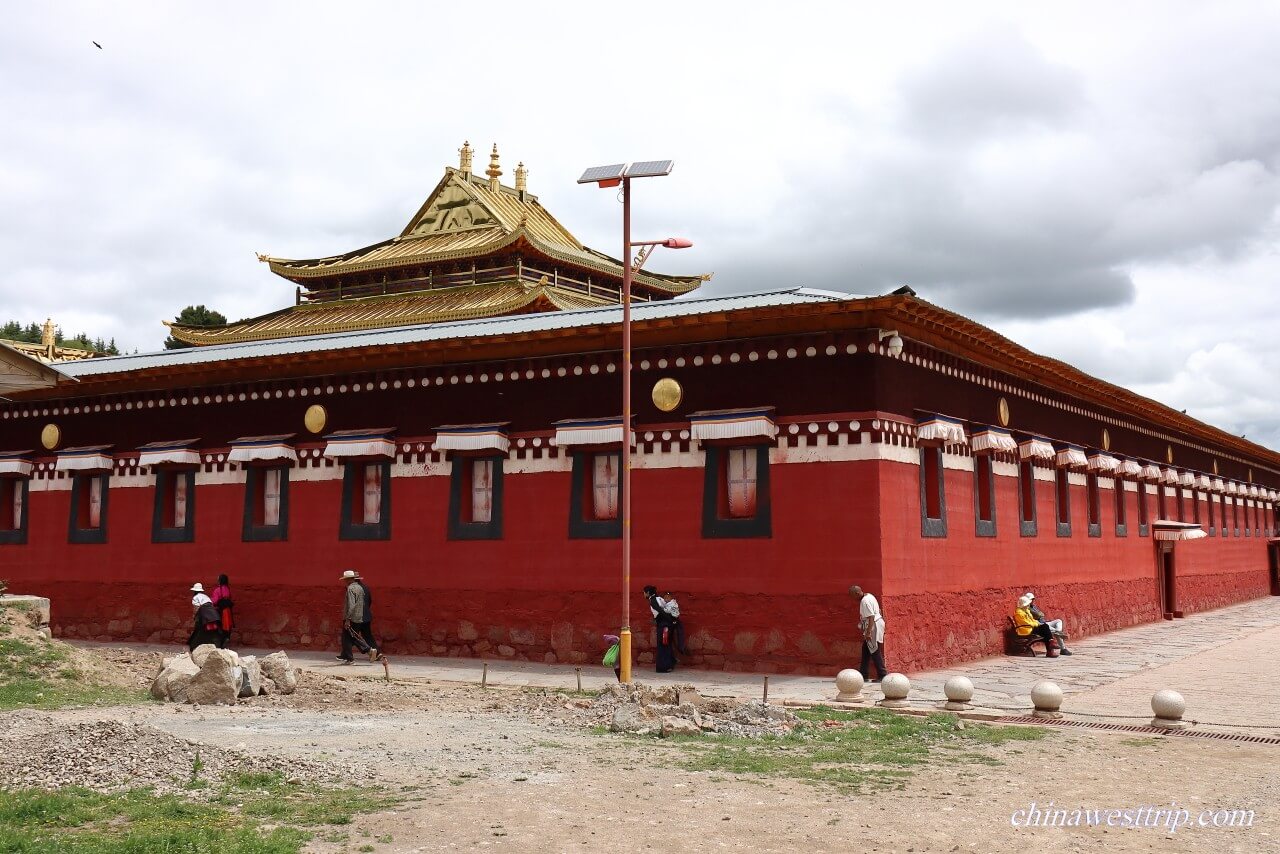
Taktsang Lhamo Kirti Gompa
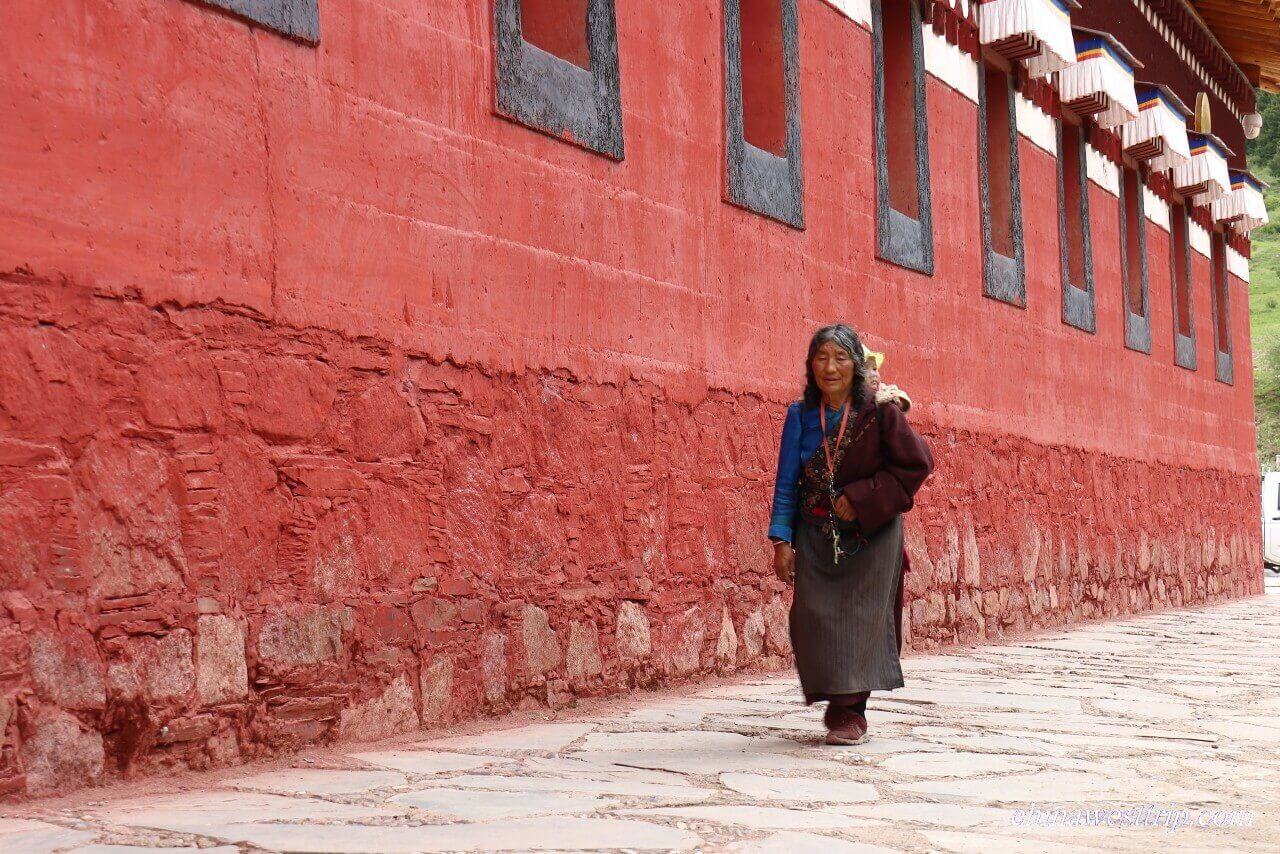
Taktsang Lhamo Kirti Gompa